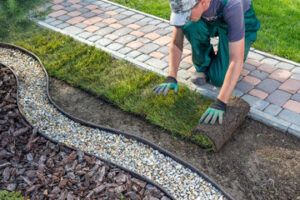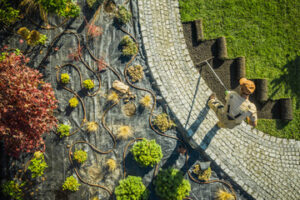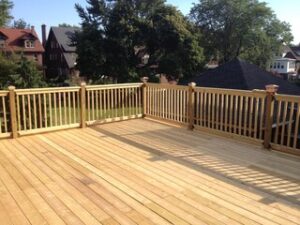Web design is more than just aesthetics. It impacts search engine optimization, Google rankings, site visitor behavior, and brand perception.

A great website has a clear structure that is easy to navigate and read. It also uses a grid-based design and white space to prevent clutter. It also uses a color scheme that is consistent throughout the site. Contact SEO Naples FL for professional help.
Web designers often work with SEO, or search engine optimization, which refers to the process of maximizing a website’s visibility by making it easier for Google to find and rank. This includes using keywords in headlines, meta descriptions, and other elements of a site. It also involves using coding to create layouts and other visual elements.
Web design is also a form of art that requires aesthetic and creative skills. It uses various design principles, such as symmetry and proportions, to create engaging and user-friendly websites. It also encompasses the use of fonts, colors, and other tools to create a unique visual identity for each website. Web designers also develop the structure of a website by arranging pages in logical ways and using navigation tools to help visitors find information quickly.
One of the most important aspects of web design is establishing a website’s color scheme. This can be used to create a consistent, recognizable brand identity or to highlight key elements of the site. For example, a web designer may decide to use a particular color for the header of a website or social media profile, while using other colors to create sub-sections and call-to-action buttons.
Typography is another critical aspect of web design, which refers to the arrangement and style of text on a webpage. It is important to choose a well-designed, clear typography that can complement a website’s aesthetic style and reinforce the site’s written messaging. This is especially true for sites that feature long, winding texts or other dense content.
A website’s footer is an important place to include contact details, a map, and other useful information. It can also be a great spot for a website’s color scheme to pop out and catch the visitor’s eye.
Web design requires frequent updating to keep the site current and relevant. This could mean adding new content, implementing a fresh design, or working on SEO. It’s important for web designers to stay up-to-date on the latest trends and technology in order to provide their clients with the best possible service.
UX
Web design is more than just aesthetics; it also involves creating a user-friendly experience that makes your website stand out from the competition. Achieving the right balance between these two elements is essential for success. If a website is not user-friendly, visitors will quickly abandon it in search of a more intuitive site.
To create a compelling UX, designers should start with an understanding of the target audience and their goals. This can be achieved by conducting market research through surveys or interviews with users. From there, the designer can identify opportunities to improve the product’s user interface and content organization. UX designers will then create wireframes and prototypes to visualize and test the designs before moving on to development.
Once a design is finalized, it’s important to consider the usability of the product. Whether it’s a website or an app, a product with high levels of usability will allow users to accomplish tasks intuitively and efficiently. For example, if a user visits a fitness website, they will want to learn more about the teachers and classes offered, and then sign up for one that meets their goals.
In addition to usability, web design also encompasses accessibility. This includes using contrasting colors to make text easier to read for individuals with visual impairments, adding descriptive alt text to images and making sure that all website functions can be navigated with a keyboard instead of a mouse. Increasing the accessibility of your product can help you reach more users and boost your sales potential.
The best websites are designed to look good and be easy to use. This means they have clear navigation, concise pages, and working links. They also follow established design practices, including symmetry and proportion. In addition, they utilize a variety of tools and coding languages to create animations, graphics, icons, logos, and other elements. You can find many examples of great web design on sites like Dribbble, Behance, and Awwwards. Lastly, you should pay attention to the typography you choose. For example, using a serif font can add elegance and sophistication to your website.
UI
UI design involves the layout and structure of web pages. It also entails the placement of elements, such as images, text and navigation bars. It also includes the creation of a visual language through the use of custom styles, fonts and colors. Using CSS to create these features is an efficient way to make web pages look professional and organized. Creating and maintaining a consistent layout is essential for good user experience (UX). A poorly designed website can give a bad first impression and cause users to seek an alternative. UX research methods like eye-tracking and concept testing can help identify the impact of a UI on users.
Whether users are interacting with an app, website or physical product, UI can affect the customer experience. Having a well-designed interface can increase customer confidence and brand loyalty, and it can also provide an excellent foundation for future development. However, if the UI isn’t intuitive, it can be difficult to understand how to use a product or navigate a website. This can cause users to seek an alternative and may lead to a loss of revenue.
The UI is more than just making a website look pretty. It is a critical part of any online business and needs to be considered carefully. This is especially important when it comes to e-commerce, where customers need to be able to easily find the products they are looking for. UI designers are responsible for everything from the search bar to the clarity of information on product pages. They also consider the overall user experience, including the ease of checkout and delivery.
UI designs can be created using many different tools, such as Figma, Photoshop and Sketch. These tools offer flexibility and collaborative integrations, but can take some time to learn. However, they are a great option for creating wireframes and custom features that can be handed off to web developers. Additionally, these tools can be used for establishing layouts and determining the number of columns needed for an image. They can also be used for defining the spacing between elements, which is crucial in achieving consistency in a web design.
Graphic Design
Websites are digital avenues that connect businesses with potential customers, clients, and users. They serve a variety of purposes, such as explaining or selling a product or service, providing company information, sharing upcoming events, and more. It’s important to keep the audience in mind as web and graphic designers create engaging imagery and a seamless user experience.
While web design focuses on the structure of a website and its layout, graphic design is focused on creating visual elements to capture the audience’s attention and reinforce the brand’s identity. These professionals work with a variety of design programs to create bespoke images, logos, icons, and other graphics. They must also be familiar with the principles of design, including symmetry, proportion, and color systems. They also need to know how to use various photo-editing software.
Moreover, web and graphic designers must be able to work well with clients and other professionals. They must have good verbal and written communication skills to explain their design process and discuss possible changes with clients. They should also be able to meet deadlines and follow brand guidelines.
In addition to these technical skills, graphic designers need creativity and originality. Their designs should stand out from the competition and be unique, but they must still be consistent with the brand’s message. Creativity allows them to find new ways to share familiar messages, which can result in greater engagement.
Graphic design also requires an understanding of the basics of web development, such as HTML and CSS. This will help them build websites that are compatible with most devices. In addition, they should be familiar with typography and how to arrange letters and words in an aesthetically appealing manner. They should also understand the difference between RGB and CMYK color sets.
Web and graphic design are different, but they both require technical knowledge of programming and web building tools. They also differ in their approach to the creative and visual side of a project. Both roles are necessary to ensure a website is successful and provides a positive experience for visitors.


